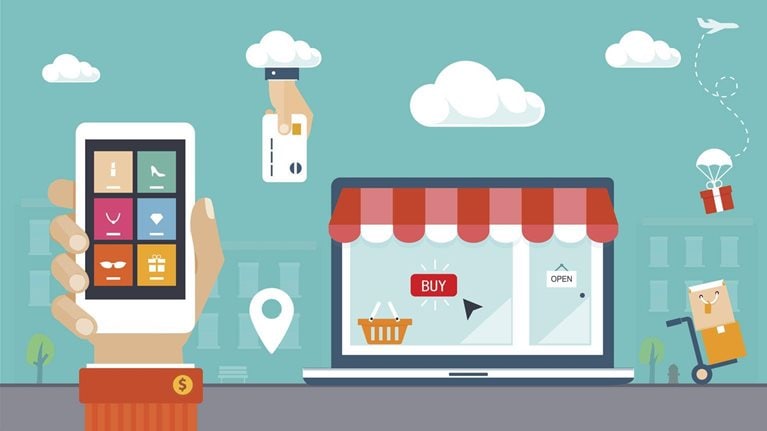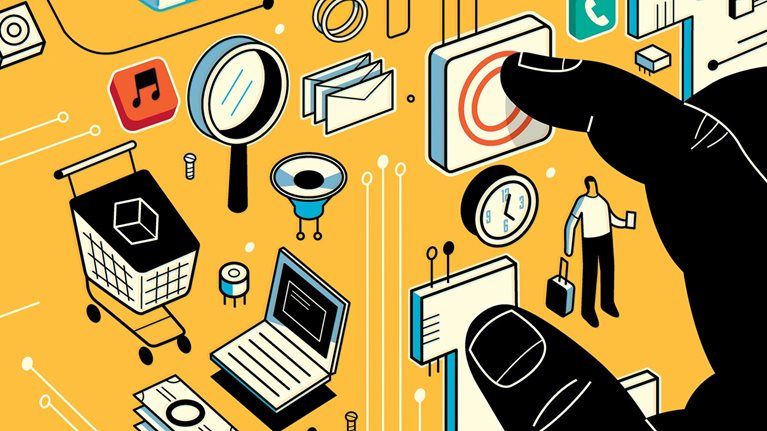The CEO of a branded apparel company was troubled and began putting some tough questions to the marketing department. The company had spent substantially on promotions and loyalty-rewards programs to drive much-needed growth based on studies showing that targeting current consumers with marketing investments offered the highest return. Yet sales results were disappointing, and an alarming number of customers were drifting away after their initial purchases. They were often going to a rival with a different marketing approach, one that deployed social media to lure shoppers to its website, where—even the chief marketing officer had to admit—creative interactions were attracting new consumers to consider the rival’s brand.
Stay current on your favorite topics
If you’re the CEO of, say, a consumer-products company—or one in banking, travel, autos, or other categories where it’s easy for your consumers to compare products—you may be finding yourself similarly perplexed, and with reason. Powerful new currents are disrupting established patterns of behavior. And consumers, including those you may have thought loyal, are considering someone else’s offerings more often than you realize. With top-line growth at the top of every CEO’s agenda, cracking the code of consumer behavior is more critical than ever.
Since 2009, McKinsey has studied the emergence of consumer decision journeys (CDJs)—the often irregular paths consumers take as they move from brand awareness through to purchase and loyalty—as a critical lever to driving top-line growth (Exhibit 1). Like the apparel company described above, many have responded to nonlinear consumer behavior by doubling down on customer-retention and loyalty programs. Selling more to consumers who are already buying seems a dependable, low-risk, and potentially quick way to boost sales growth. Recent research shows a 26 percent increase in loyalty-program memberships between 2013 and 2015.

Evidence has begun emerging, however, that consumer bonds with many brands is simultaneously slipping, with active engagement in those same loyalty programs falling by two percentage points and 58 percent of loyalty members not using the programs for which they are signed up. We see such data as an important signal that new technologies and greater choice are changing how consumers are thinking and acting across their consumer journeys. As one executive puts it, “In the digital world, your consumers can’t help but shop around.” The past few years have seen exponential growth in tools that have made researching and purchasing products online vastly easier. An explosion of mobile shopping apps that showcase options, simplify pricing, compare product specifications, and facilitate peer reviews is making it possible to size up brands effortlessly. In addition, social media lets consumers know exactly what their friends are buying and what they like and don’t like about those purchases. The sheer weight of all this encourages even your best consumers to shop around and changes paradigms that marketers have counted on for years.
To better understand the magnitude of change in consumer behavior, we turned to our CDJ database, which now covers more than 125,000 consumers, shopping for more than 350 brands. The numbers tell a startling story. Of the 30 categories we researched, only 3 were loyalty driven, with consumers predominantly making the same brand choices from one purchase to the next rather than shopping around. In the other 27 categories, consumers exhibited strong shopping tendencies (Exhibit 2).

The elusiveness of loyalty suggests marketers need to place more emphasis on the moments when consumers are initially considering which products or services to buy. They’ll need a fine-tuned understanding of who those increasingly fickle consumers are, what triggers them to shop, and how best to enter what’s known as the initial consideration set. And of course, once a brand is in a consumer’s consideration set, marketers will still need to fend off competitors as they attempt to dislodge it during a round of active evaluation, thus increasing the odds of converting shoppers at the moment of purchase.
Would you like to learn more about our Marketing & Sales Practice?
Your new ‘shop-around’ consumers
We sought further to understand the extent to which shopping led to either a repurchase or, alternatively, a switch to another brand. Within the 27 categories where shopping around was dominant, we divided consumers into three groups based on what the data said about their buying behavior. Loyalists were those who remained faithful to the last brand they purchased without considering other choices. Vulnerable repurchasers gave in to the urge to shop around and considered other brands at least briefly, but ended up returning to the fold. Switchers took the next step and purchased another brand.
What surprised us was not only how ephemeral loyalty is, but also how often consumers switched brands once they decided to shop. In the categories where we examined purchase behavior, only 13 percent of consumers were loyalists. A full 87 percent of consumers, in other words, were shopping around. A portion of this group—the vulnerable repurchasers, who represented 29 percent of all consumers studied—ultimately didn’t change brands. But the remainder, comprising 58 percent of our sample, became switchers. Incumbent brands held their own just 42 percent of the time (Exhibit 3).

Digging deeper, we discovered just how vital it is to be included in the set of brands that first come to a consumer’s mind when he or she is triggered to make a purchase decision. These brands in the initial consideration set were more than two times as likely to be purchased as were brands considered only later in the decision journey. (Downstream consideration might take place, for example, when a buyer performs a more thorough comparison of products using online tools or evaluates products like televisions in a retail store.) Overall, 69 percent of the brands purchased by consumers who switched brands were part of their initial consideration set when they started shopping.
We’re not suggesting that marketers ignore other parts of the consumer decision journey. Providing quality and service, or rewarding your most loyal customers during the postpurchase experience, remains important. After all, as we have noted, 42 percent of purchases are still made by consumers who return to their incumbent brand and are responsive to repurchasing incentives.
But investing too much of your marketing dollars in loyalty is risky when today’s shop-around environment means it’s easy to lose consumers faster than you add new ones. Instead, companies that hope to move the growth needle need more focus on innovative programs for the 87 percent of consumers out there who are likely to look beyond their current brand.
The link between initial consideration and growth
In a world where most categories are shopping driven, consideration and growth should be strongly correlated—and they are. We used our survey data to identify how frequently a consumer put a given brand in his or her initial consideration set versus other brands in the category. We then divided that consideration measure by the brand’s market share and multiplied it by 100.
This metric, which we call the customer growth indicator (CGI), takes into account the consideration a brand is able to command, as well as the fact that as a brand’s share grows, greater consideration is needed to keep up the pace of growth.
For most categories in our research, CGI explains a full 60 to 80 percent of the variation in sales growth from one purchase to the next (Exhibit 4). The tight linkage between CGI and growth underscores the importance of initial consideration to a company’s brand strategy and suggests the new metric should be a useful benchmark for assessing brand health.

In fact, we would suggest that companies augment current metrics to include the CGI as a way to better understand their potential growth relative to competitors. Today’s recommendation metrics are a valuable means of understanding whether marketing programs are delivering loyalty and customer satisfaction, but research has found they can explain only 20–60 percent of variations in growth.
Further evidence for the rising importance of engaging shoppers early came when we tested the relationship between growth and total consideration, which includes those brands considered at the initial shopping trigger point, as well as those added throughout the full shopping process. We found that initial consideration, isolated as a factor, is generally much better than total consideration at explaining the variance in near term (within one year) growth. That explanatory power confirms the need for marketers to win attention for their brands at the very beginning of a shopper’s journey.1
Marketing to increase consideration
Earning initial consideration goes well beyond getting shoppers to be aware of your brand name. They also need to have a clear enough sense of its unique benefits and value to include it among products they plan to evaluate as they begin their journey toward a purchase. While traditionally, this would have prompted companies to increase spending on television advertising, today many additional avenues are open to drive shoppers to brands. We’ll focus here on three proactive moves companies can take to boost initial consideration, drawing some lessons from companies that have category-leading CGIs.
Resegment the consumers you don’t target
Loyalty-based marketing doubles down on a narrow selection of high-value consumers and then spends on incentives to retain them. By contrast, marketing geared to growing initial consideration will exploit a more diverse and wider set of consumer segments, many with limited or perhaps even no experience with the brand. The name of the game is expanding your window for growth potential, which is likely to demand quite different approaches for shoppers who have and have not previously engaged with the brand.
Consider first consumers who have had a positive experience with the brand in the past but have stopped buying. These “lapsed” customers may hold high potential: our research shows the most important touchpoint for driving initial consideration is previous interaction with a brand, even if the interaction happened several years before. So marketers need to look hard at the reasons behind consumers’ “no repurchase” decisions. In some cases, a better offer may have stolen away a lapsed customer; in others, lifestyles or habits have changed. Some consumers may never have connected emotionally to your brand. The task of rekindling initial consideration is likely to look quite different across consumer groups like these.
For consumers who have had no experience with the brand, the underlying issues can be even more complex. The consumers in question may not understand the brand, often have never considered it, and sometimes even harbor feelings that the entire category just isn’t for them. Take vacation cruises, which some consumers reject out of hand because of preconceived notions about the cost or nature of the cruising experience. Disney, though, has built on its well-known brand in entertainment to expand into the vacation-cruise category. With a sharp focus on creating unique experiences, Disney has attracted consumers who ordinarily would not have considered a cruise vacation. Disney led its category in our CGI measure and has experienced above-average growth compared to other cruise providers.

The consumer decision journey
Rebalance marketing budgets, giving more weight to what counts most
While the importance of consideration is hardly a new concept, the need to elevate initial consideration requires new focus. The basic playbook for driving more of it is straightforward: deemphasize lower returning marketing investments, many of which may ignore initial consideration, and spend more to encourage it.
Prune spending on closing the sale and loyalty. Although many marketers emphasize sales incentives and rewards for loyalty, such initiatives are poor at driving consideration and also can run into diminishing returns. Airlines, for instance, have been cutting back their loyalty programs and raising the requirements to achieve elite status for several years because the programs, while effective, simply became too expensive. Many consumer marketers including packaged-goods, automotive, and financial-services companies are also taking a deeper look at the true return on spending from short-term sales incentives and finding significant opportunities to reduce spending. Actions like these that shift budgets away from lower-productivity spending are critical since they free up resources for initiatives that drive initial consideration among promising segments. For example, during the recession that started in 2008, rather than just follow the usual auto-industry playbook by trying to stop the bleeding with short-term sales incentives, Hyundai used an innovative marketing campaign to build consideration. It promised to take back cars from customers who had lost their jobs to drive up consideration among consumers financially unsettled by the recession. Hyundai had an impressive CGI score, and it also was one of the very few auto companies to grow at a time when the industry was widely losing ground—a signal of the importance of initial consideration not only in up markets, but also in tough environments.
Encourage consideration. With funding freed up, you need to begin expanding initial consideration across two horizons of marketing engagement. First, you’ll need new ways of boosting broad awareness of your products, services, and brand—likely using major media or social channels—that give consumers a reason for learning more about your brand. Second, you’ll need an innovative approach for translating traffic beyond simple awareness to real brand consideration, often on your website, where there’s an opportunity to convey a fuller picture of the brand’s value through creative interactions.
Cosmetics firm L’Oreal and financial-services player Charles Schwab suggest how this can be done. Both used social media and display ads to drive a wide cross section of consumers to their websites, where they offered them user-friendly tools that encouraged brand interactions. For L’Oreal, it was teaching consumers the right way to apply makeup; for Charles Schwab, it was a tool to help learn the basics of financial planning. Gilt Groupe, the online luxury-goods site, took a different approach. It used broad-reach banners ads, each of which highlighted very low prices for designer brands. Once the consumer followed the link to the website, he or she learned of the brand’s innovative business model and value proposition—an inside track on great deals. The goal in each case has been to use the broad reach of social and digital channels to highlight a unique offer that persuades consumers to learn more about the brand, thereby building consideration.
Build a pipeline of innovative product, service, and brand news
Creating more innovative and exciting products or variations can grow consideration organically. News about a brand often is a powerful trigger for new consumers to add it to their initial consideration set. It also keeps current customers engaged. While the news must of course be relevant, it can range from announcements about new products or features to messages that position products creatively to new types of consumers who don’t have the brand in their consideration set. Credit-card marketers, for instance, often design new product offerings that spur current and new consumers to reevaluate preferences. For example, Bank of America’s BankAmericard Better Balance Rewards credit card, Capital One’s Quicksilver card, Citi’s Double Cash card, and the Discover It card have all promoted innovations that increase the likelihood of consideration by rewarding consumers for card usage in new and differentiated ways.
The CGI leaders in our database have a tradition of building buzz with brand news as part of an integrated plan. Consider Apple, which earns high CGI scores and has outgrown competitors by offering product innovation and a differentiated consumer experience. It has long used product news on innovations to stoke the interest of shoppers who then place the brand in their initial consideration set.
Every company we know is sweating out efforts to increase revenue from their brands. Earning a spot in consumer’ highly valuable initial consideration sets has never been more crucial. Measures like the initial consideration index can help companies understand how their brands stack up against those of competitors while offering a way to track progress as they encourage consumers to consider their brands first.
None of this, of course, diminishes the need for a well-orchestrated program across the consumer decision journey, including staying in the mix during active evaluation, converting sales at the moment of purchase, and ensuring loyalty and retention. Yet in a world where market noise will inevitably increase, initial consideration has emerged as marketing’s most critical battleground.


